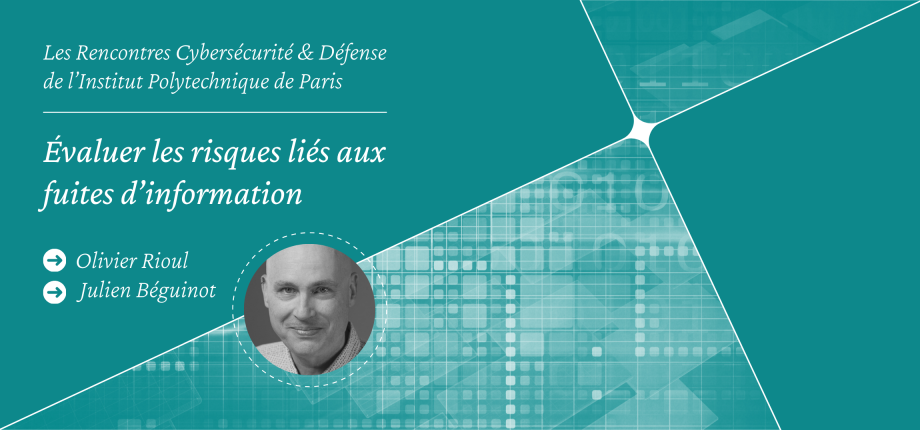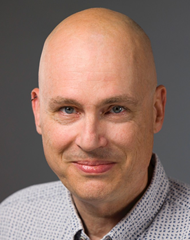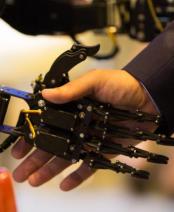Assessing the risks associated with information leaks

Your research focuses on the security of systems that incorporate cryptographic solutions. What does that involve?
O.R: We are interested in the vulnerabilities of these devices. For example, when a circuit runs a cryptographic algorithm, it emits electromagnetic waves linked to power consumption. These can be measured using probes and, through signal processing, can reveal sensitive information about the key that secures the algorithm. In other words, an auxiliary communication channel (side channel) is created, which is unintentional and vulnerable to attack. We study and evaluate information leaks and possible attacks on these channels.
J.B: In addition, the security of devices (bank cards, cell phones, connected objects, etc.) or software using cryptography is systematically evaluated by laboratories approved in France by the National Cybersecurity Agency (ANSSI) before they are placed on the market. Our work aims to improve existing evaluation methods, which is of direct interest to these laboratories.
How do you go about evaluating these leaks and what are your objectives?
J.B: We use tools derived from Claude Shannon's mathematical theory of communication. This theory determines how to send a message optimally and reliably through a channel, despite noise, using statistical concepts. It is one of the founding elements of our digital world.
Thanks to these tools, we are able to characterize the constraints of an auxiliary channel and determine the maximum number of bits of information it can deliver. We can then detect and quantify information leaks from a circuit to an attacker.
O.R: Using these same mathematical instruments, we also determine the minimum number of actions an attacker must perform to break a system's cryptographic key, regardless of the type of attack.
We are thus developing a generic evaluation method that provides guarantees to circuit designers: if a better attack is developed in the future, the minimum number of actions required to access the secret will always be the same. This is a benchmark that circuit designers use to improve the robustness of their products by developing countermeasures.
What significant results have you achieved?
J.B: Thanks to Shannon's theorems, we have been able to finely quantify the gain to be had from fragmenting a secret into several pieces in order to protect it. It is impossible for an attacker to read this secret without first detecting the information leaks relating to each piece and thus reconstructing the puzzle. The probability of achieving this goal then decreases exponentially with the number of pieces.
O.R: We have also established security proofs for complex circuits by developing an “all or nothing” approach to the various elements that make up these circuits. In other words, we apply, or do not apply, a probability to information leaks emanating from each of them. This simplifies the analysis of the circuit as a whole.
J.B: A third of our results relate to the performance of attacks. We have succeeded in limiting these for leak measurements of interest to circuit designers. For example, what will be the average time to succeed in an attack if I obtain such measurements? What is the probability that the attacker will achieve their goal if they have access to a particular leak of my secret?
What are your plans today?
J.B: We are continuing our evaluations by adapting certain tools from Shannon's information theory. For example, we are working on improving the accuracy of attack performance determinations.
O.R: Thanks to our partnership with Secure-IC (whose CTO, Sylvain Guilley, is co-supervising Julien's thesis), we have filed patents on various types of attacks. We are also developing certification methods that could change international security standards (Common Criteria).

Olivier Rioul is a professor in the Comelec department at Télécom Paris, LTCI, Institut Polytechnique de Paris, France. He is a graduate of École Polytechnique and École Nationale Supérieure des Télécommunications de Paris, where he obtained his PhD. His research focuses on applied mathematics and includes various, sometimes unconventional, applications of information theory, such as inequalities in statistics, hardware security, and experimental psychology. He has been teaching information theory and statistics at various universities for twenty years and has published a textbook that has become a classic French reference in this field.
>> Olivier Rioul's Télécom Paris webpage
>> Olivier Rioul on Google Scholar
Julien Béguinot is a doctoral student at Télécom Paris, under the supervision of Olivier Rioul and Sylvain Guilley. He is interested in information theory and its applications in the field of security.
>> Julien Béguinot's Télécom Paris webpage
>> Julien Béguinot on Google Scholar














